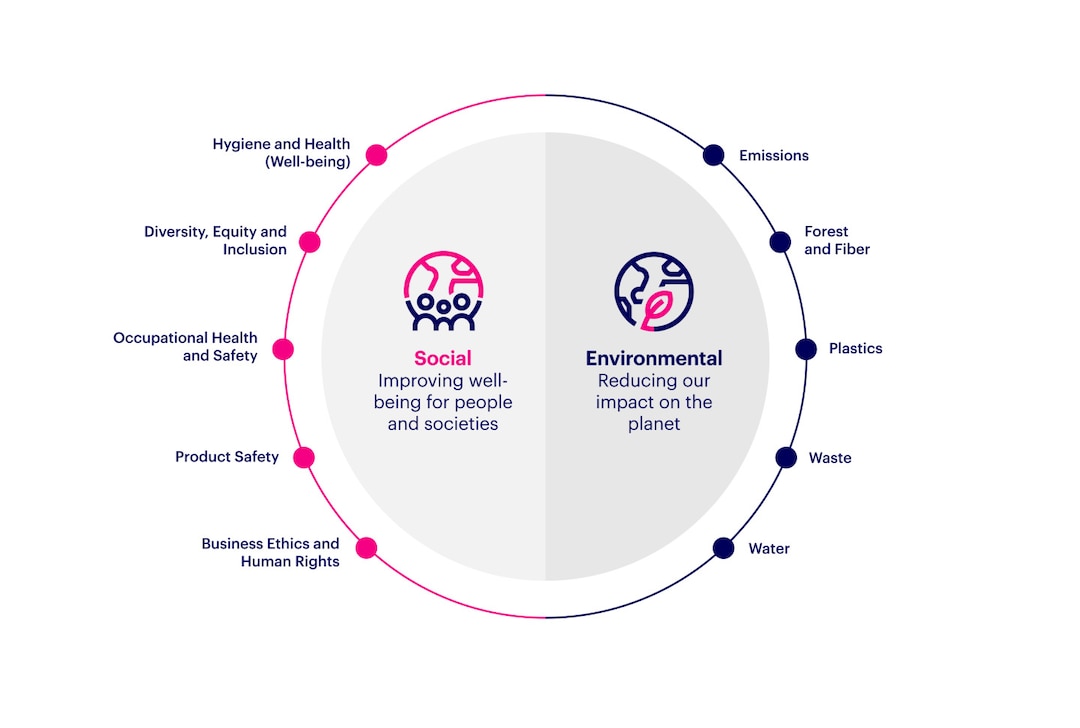Essity’s target is to achieve net zero emissions of greenhouse gases by 2050 and zero production waste by 2030. In 2018, our climate targets were approved by the Science Based Targets initiative for Scope 1, 2 and 3, and we raised our ambitions for Scope 1 and 2 in 2021. We take action throughout the entire value chain, from responsible procurement of raw materials to waste after use.
Sustainability targets
We have set ambitious targets to reduce greenhouse gas emissions across the value chain, limit our burden on the environment and reduce our impact on biodiversity.
Targets and outcomes in 2023
In 2023, Essity introduced the “Sustainability Playing Field,” summarizing our social and environmental sustainability priorities. We focus on the social areas of hygiene and health, diversity, equity, and inclusion (DEI), occupational health and safety, product safety, business ethics, human rights, and the environmental areas of emissions, forest and fiber, plastics, waste, and water. These are the most relevant topics for Essity regarding impact, and we have targets, roadmaps, and initiatives in place within all areas.

 Austria
Austria  Belgium
Belgium  Canada
Canada  Denmark
Denmark  Finland
Finland  France
France  Germany
Germany  Italy
Italy  Mexico
Mexico  Netherlands
Netherlands  Norway
Norway  Poland
Poland  Spain
Spain  Sweden
Sweden  United Kingdom
United Kingdom  USA
USA 